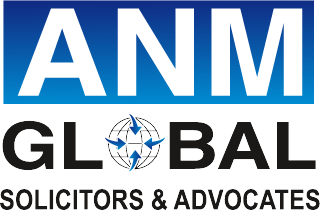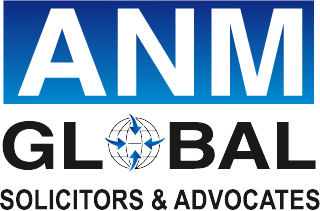Guidelines for Accessibility Standards in the Public Exhibition of Feature Films in Cinema Theatres for Persons with Hearing and Visual Impairment
By Tanya Gupta, Senior Associate and Prachiti Joshi, Associate
Introduction
On March 15, 2024, the Ministry of Information and Broadcasting (“MIB”) issued the Guidelines for Accessibility Standards in the Public Exhibition of Feature Films in Cinema Theatres for Persons with Hearing and Visual Impairment (“Guidelines”) (which can be accessed here) with the objective of enabling a strong framework to support the development of practices of inclusivity by ensuring accessibility of feature films for persons with hearing and visual impairments. India, is a signatory to the United Nations Convention on the Rights of Persons with Disabilities, which recognizes ‘accessibility’ as a human right and requires signatories to adopt appropriate measures to ensure that persons with disabilities have access to information and communication technology, emergency services and internet services on an equal basis with others. Further, the Government of India has also enacted the “Rights of Persons with Disabilities Act, 2016”, which aims to create a free environment by removing all type of discrimination against persons with disabilities. In the past, MIB has taken multiple steps to make recreational entertainment and the film industry accessible and inclusive to every person. The Guidelines have been issued in line with the United Nations Convention on the Rights of Persons with Disabilities and the Rights of Persons with Disabilities Act, 2016; and after deliberations and consultations with various stakeholders such as film industry, experts in the Department of Empowerment of Persons with Disabilities, Ministry of Social Justice & Empowerment, Government of India; Chief Commissioner for Persons with Disabilities and the National Institutes for various disabilities under Department of Empowerment of Persons with Disabilities, etc. Further. these Guidelines have been formulated keeping in mind the principles of non-discrimination; full and effective participation and inclusion in society, availability, advocacy and affordability.Objective of the Guidelines: The objectives of these Guidelines have been formulated by adopting the following measures:
- To define general principles for accessibility of feature films;
- To identify barriers to fully accessible feature films by determining relevant rules, requirements, standards and funding mechanisms to address such barriers;
- To establish measures to ensure that persons with hearing and visual impairment have access, on an equal basis with others, to the public exhibition of feature films in cinema halls/movie theatres screened for commercial purposes;
- To define an institutional framework to ensure transparent oversight and impartial dispute resolution mechanism.
Features of the Guidelines
- The Guidelines are applicable to “Feature Films” that are certified by the Central Board of Film Certification (“CBFC”) for public exhibition. As defined under the Guidelines, a “Feature Film” means a fictionalized story film running not less than 72 minutes.
- The Guidelines provide a list of “Accessibility Features” (given hereinbelow) which must be provided by producers of the Feature Films when a Feature Film is delivered to the CBFC for certification. The producer will be required to deliver the Film for certification to CBFC in the form of digital cinema package containing all the relevant files, which shall include the Accessibility Features.
“Accessibility Features” include the following:
| Sr. No. | Features | Requirements |
|---|---|---|
| 1 | Audio Description (AD) | The descriptions must be kept concise enough to fit into the allotted time in order to ensure that they enhance the original piece rather than distract from it. |
| 2 | Closed Captioning (CC) and Open Captioning (OC) |
|
| 3 | Indian Sign Language | Interpretation of Indian Sign Language by Interpreters must be provided in a picture-in-picture mode, be accurate, synchronized, and clear for the hearing impaired. The interpreter’s facial expressions should also be visible. The image of the Interpreter should not overlap with captions or on-screen content. |
- The Guidelines further put an obligation on Cinemas (as defined under the Guidelines) to ensure that Feature Films delivered for theatrical releases mandatorily have all relevant files including the files for the Accessibility Features as certified by the CBFC.
- The Accessibility Features of the Feature Films may be deployed by licensees of cinema theatres by any of the following means, using the following separate equipment in theatres during the regular show:
- I. Using the following separate equipment in theatres (during the regular show):
- Mirror Captions – Inverted Captions of the movie are played at the back of the cinema. A mirror is provided that can be stored in the cup holder of the seat, and can be adjusted in a way that enables one to see the captions in that mirror. As the movie is being watched, the Closed Captions (CC) are reflected the right way around in the mirror;
- Closed Captioning Smart Glasses with wires, wherein captions are in display at the bottom of the glasses;
- Closed Caption Stands – A fle xible long pole by the side of viewer that is attached to a small rectangular screen is provided to display the captions;
- Closed Caption display below the Screen – A separate small screen immediately below the big screen with synchronized projection display of captions/subtitles;
- Headphones/Earphones for Audio Description (AD) – Audio Description is provided through headphones or earphones attached to specific AD-enabled seats.
- Using Mobile Apps (during the regular shows): Producers may integrate the CC & AD for the Feature Films in any of the suitable software applications, to extend the accessibility feature in any usual screening of the Feature Films in the theatres, which the users may download for use on their personal device.
- Using other technologies: Use of any other technological inputs as supportive/assistive devices and software applications as available in the market.
- I. Using the following separate equipment in theatres (during the regular show):
- The cinema theatres shall provide the accessible features as mentioned in paragraph (5) above within a period of 2 (two) years of issue of these Guidelines.
- Cinema theatres shall provide Accessibility Features in a regular show by making available at least 2 to 5 equipment per 200 seats for both CC & AD and further, may consider holding special screenings of accessible films on demand. They are also required to make annual action plans for the next two years, for developing a self-regulatory mechanism for providing the requisite number of seats with accessibility features, which shall be prepared after consultation with stakeholders of relevant persons with disabilities.
Process of Implementation:
- The applicants for certification of films for theatrical release i.e., the producers, shall arrange the access-service for their films as per the following schedule:
| Sr. No. | Accessibility Feature | Timelines |
|---|---|---|
| 1 | All feature films that are to be certified in more than one language would be required to provide at least one Accessibility Feature, each for the hearing impaired and visually impaired, i.e., CC/OC & AD | Within 6 months from the effective date of implementation of these Guidelines (i.e., from the date of issue of the Guidelines) |
| 2 | Feature films submitted for consideration in National Film Awards and in the Indian Panorama Section of the International Film Festival of India, Goa, and other Film Festivals organized by MIB shall mandatorily include CC and AD | With effect from 1st January, 2025 |
| 3 | Feature films submitted for consideration in National Film Awards and in the Indian Panorama Section of the International Film Festival of India, Goa, and other Film Festivals organized by MIB shall mandatorily include CC and AD | From 2 years from the date of issue of these Guidelines |
- Accessibility through Mobile Apps: Producers should strive to integrate the CC/OC & AD for the Feature Films in any suitable software application to extend the accessibility feature in any usual screening of the Feature Films in the theatres, which can be used through the personal device of a user.
- The producer shall prominently display the content descriptor for accessible content on every certified film including in teasers and trailers, for the benefit of viewers.
Conclusion
The Guidelines have set a foundation for inclusivity in the film industry and consumption of content. It puts down an equal responsibility on both producers and exhibitors to ensure that the Feature Films are made accessible to each citizen on an equal basis, as per the requirements of the Guidelines. The Delhi High Court in Akshat Baldwa v. Yash Raj Films [1] (which sought audio description, subtitles and captioning in Hindi for the OTT release of Pathaan allowing persons with hearing and visual disabilities to access the film) has also observed that accessibility is “crucial and is enforceable as a legal right” urging the centre to notify the Guidelines by July 15, 2024 [2]. Films are a very important part of culture and society and accessing a cinema theatre is an important part of the film watching experience. It must be ensured that persons with disabilities do not miss out on consumption of content or such experiences, if there are technological and other means to ensure accessibility in todays’ day.– Tanya Gupta, Senior Associate Prachiti Joshi, Associate
Footnotes
1 Akshat Baldwa & Ors. vs Yash Raj Films & Ors. on 16 January, 2023 (indiankanoon.org)




